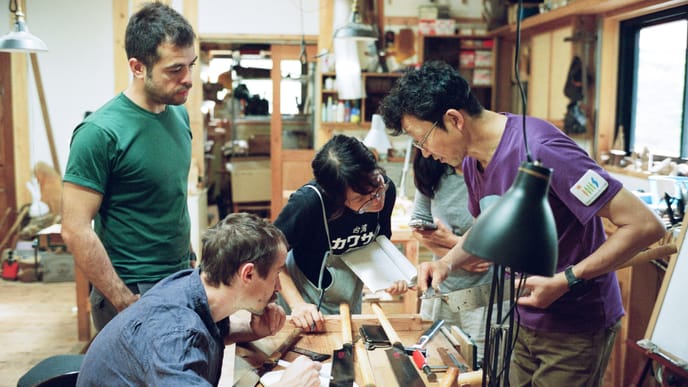This post will look better on a browser, on a larger screen.
I feel lucky to return to Mount Fuji Wood Culture Society, to study with Tak Yoshino. This trip—my third in a year—also coincides with the arrival of sakura blossoms.
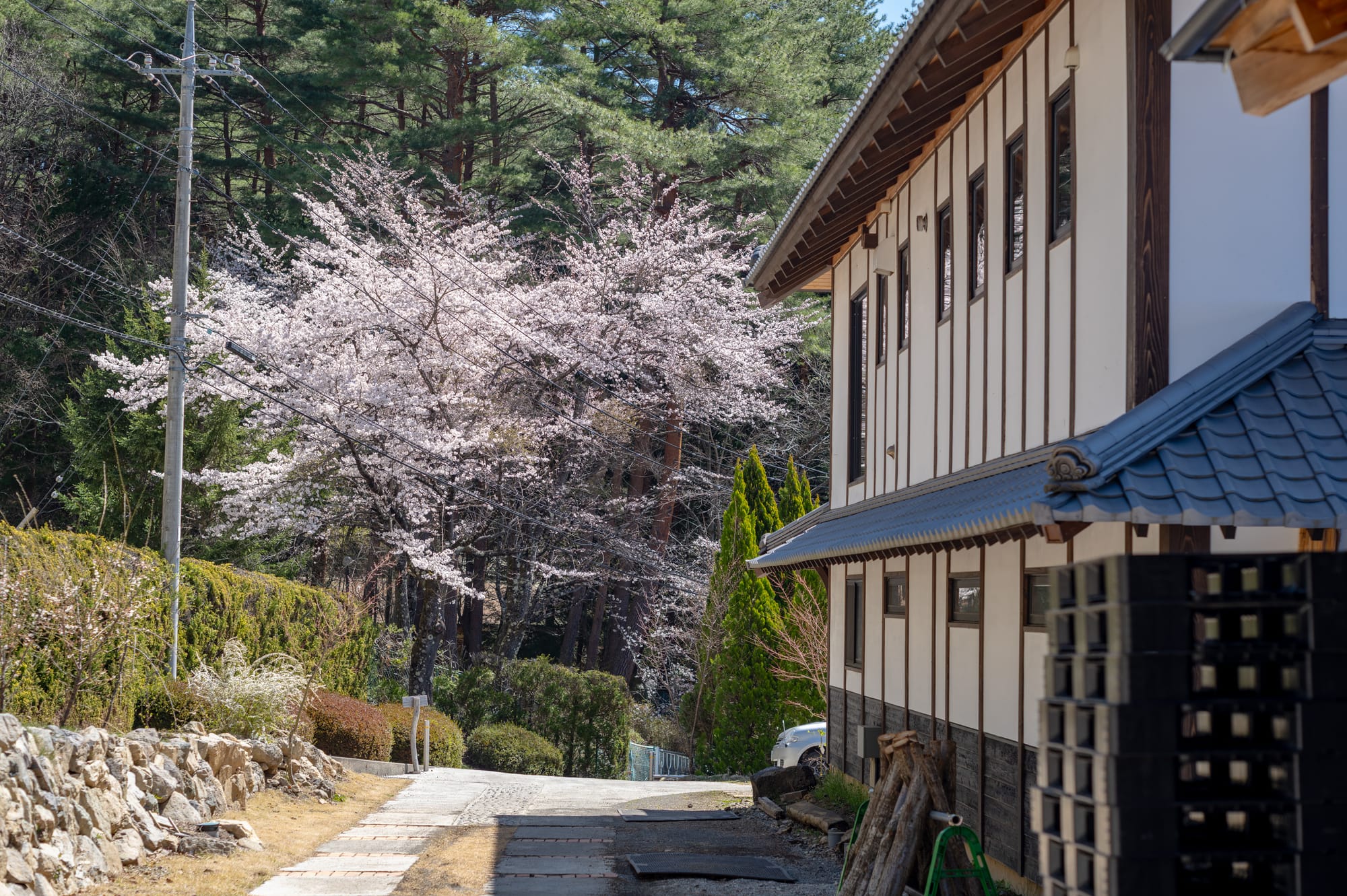
When I entered the shop on my first day, Tak-san suggested I use a small bench near the sharpening sink instead of being asked to work on the usual benches.
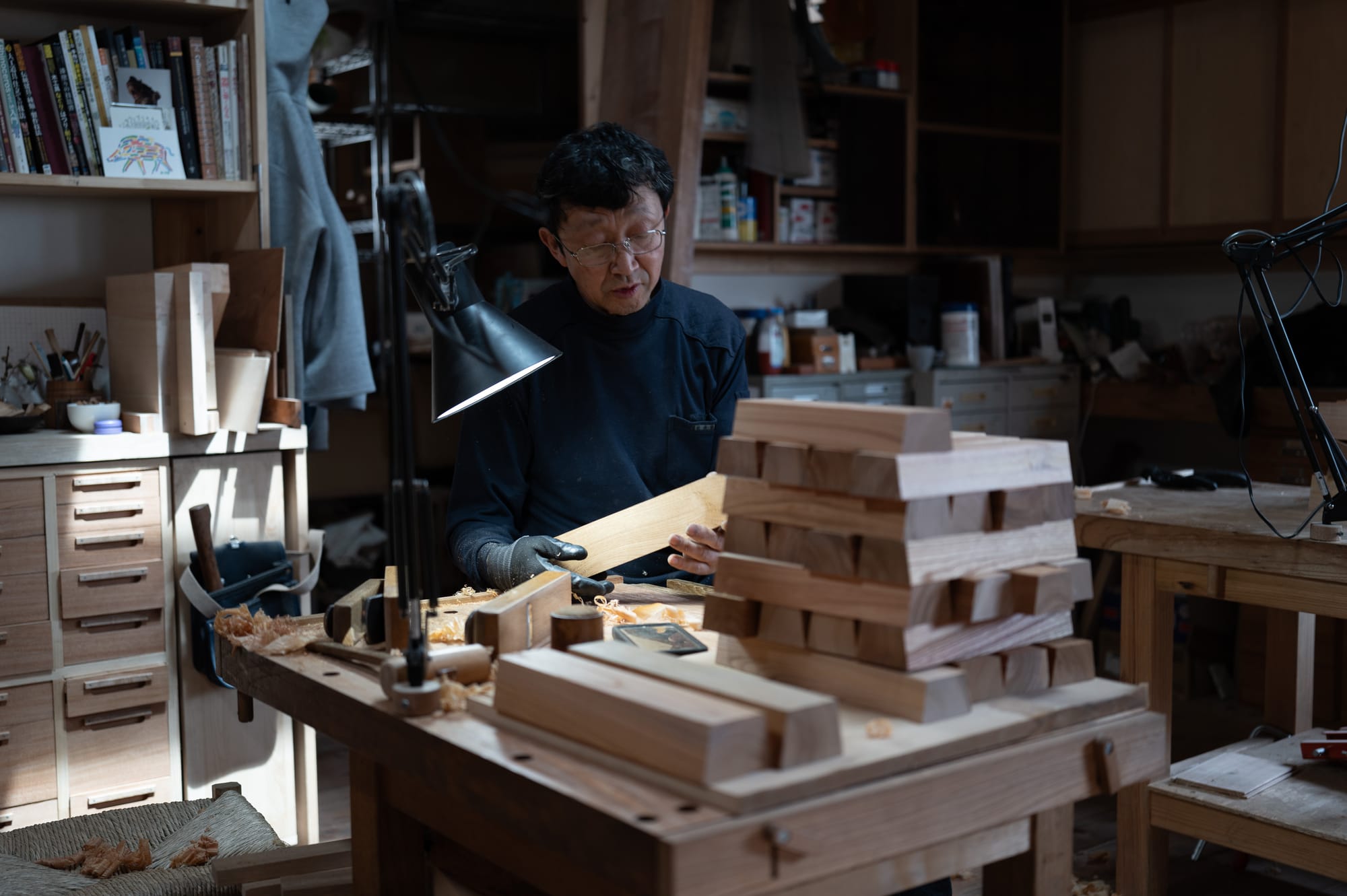
The bench was nothing special, to my eye. It was a non-descript slab sitting on a cabinet, lacking a vise or other modern holding fixtures, and dirty from being used as a place people would rest freshly sharpened tools on, sometimes covered with wet grit. I wasn't eager to try it until he explained it was his atedai. And that it had belonged to his sashimono master, national living treasure Suda Kenji. I cleaned it best I could, and we carried the slab down to the floor. Tak brought me a pair of zabuton to work on.
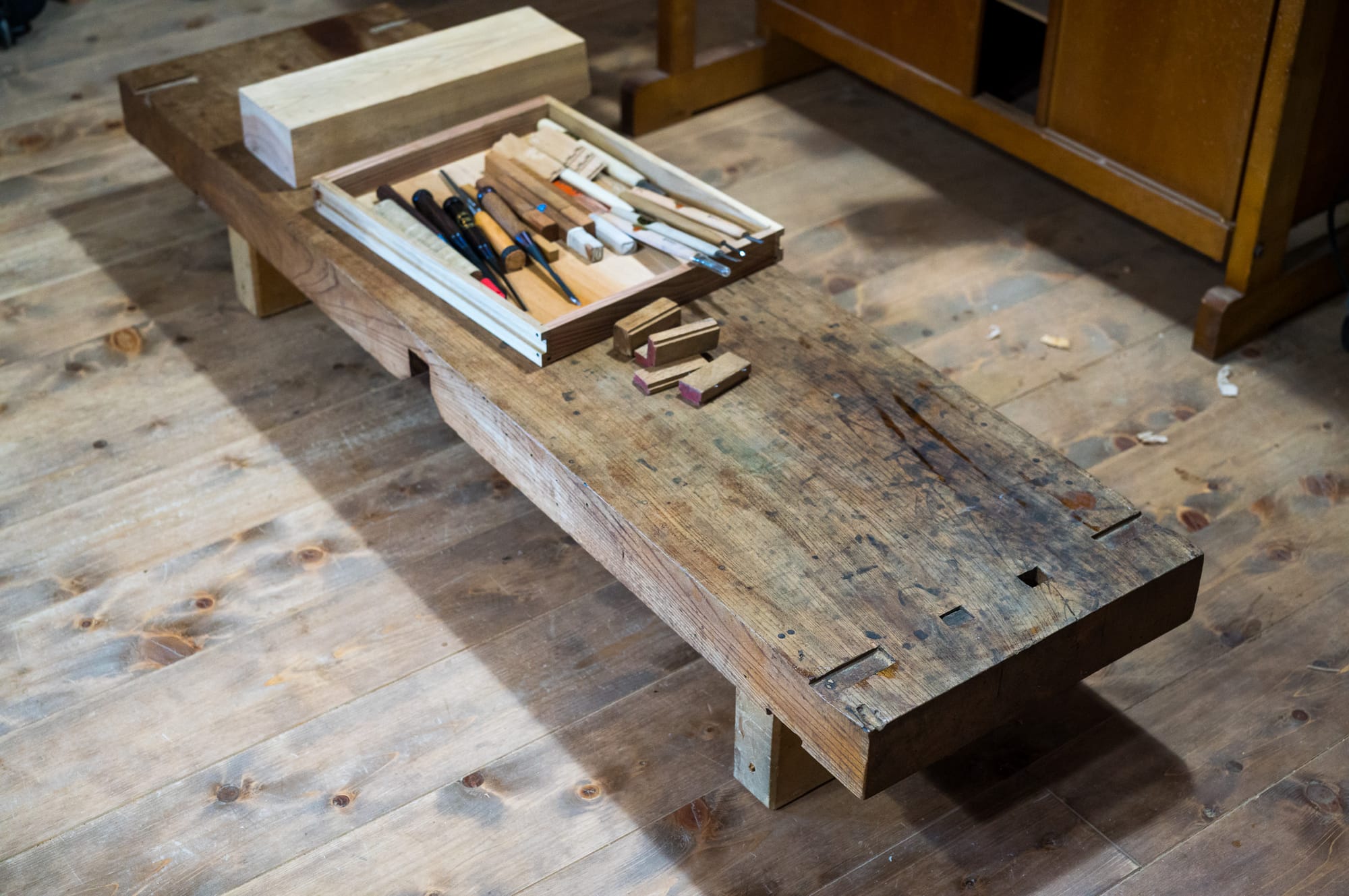
The atedai's work surface was a 140x38x12cm keyaki slab with stops on one end. I might draw up plans if anyone is interested. I wonder if sitting zazen at Chozen-ji helped me work on the floor for the week. It wasn't always comfortable, but I felt intimate with my work and tools.
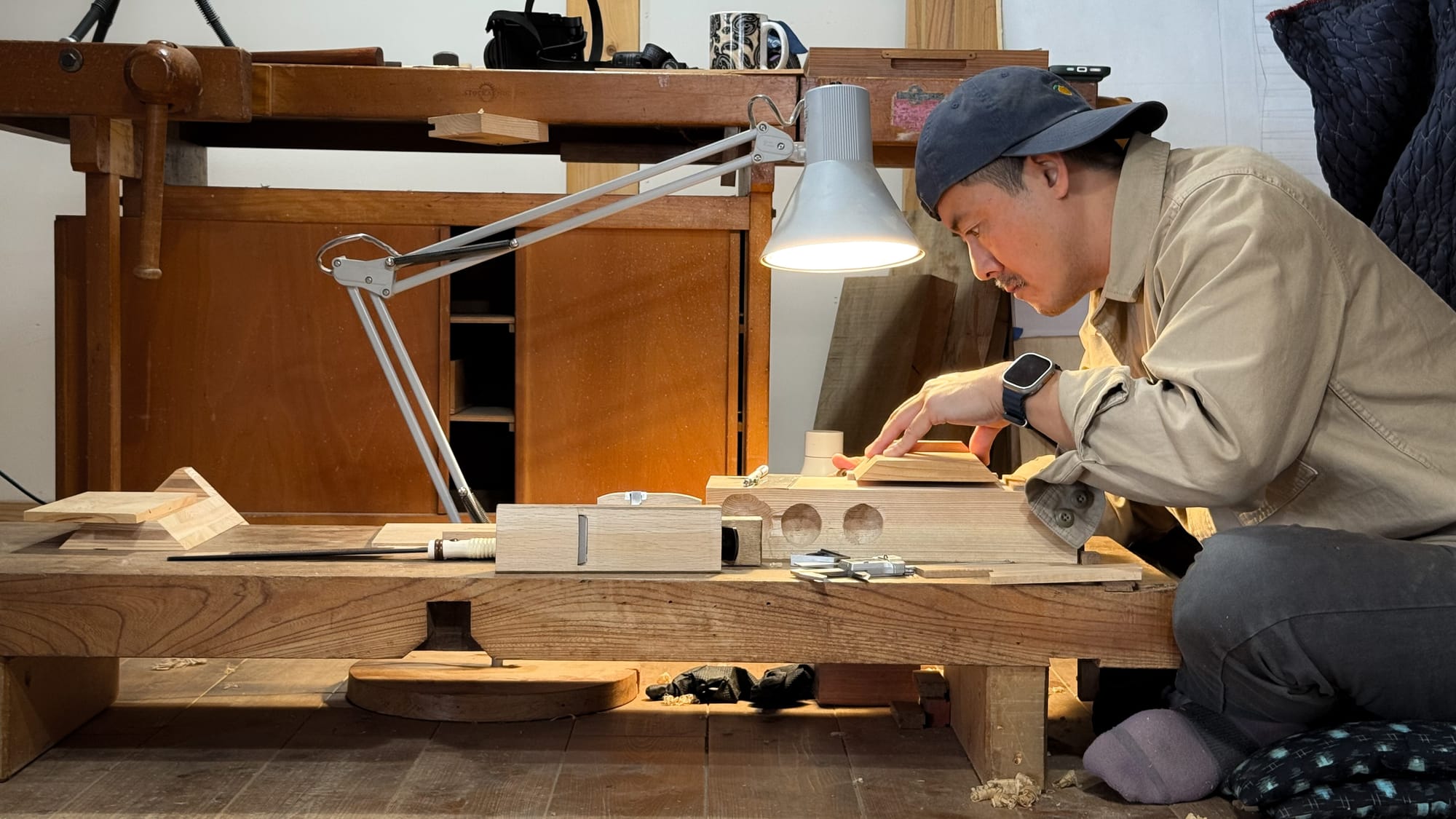
Free of distractions, Tak's apprentice, Togo, worked late each night. Even while he recovered from an injury on the table saw.
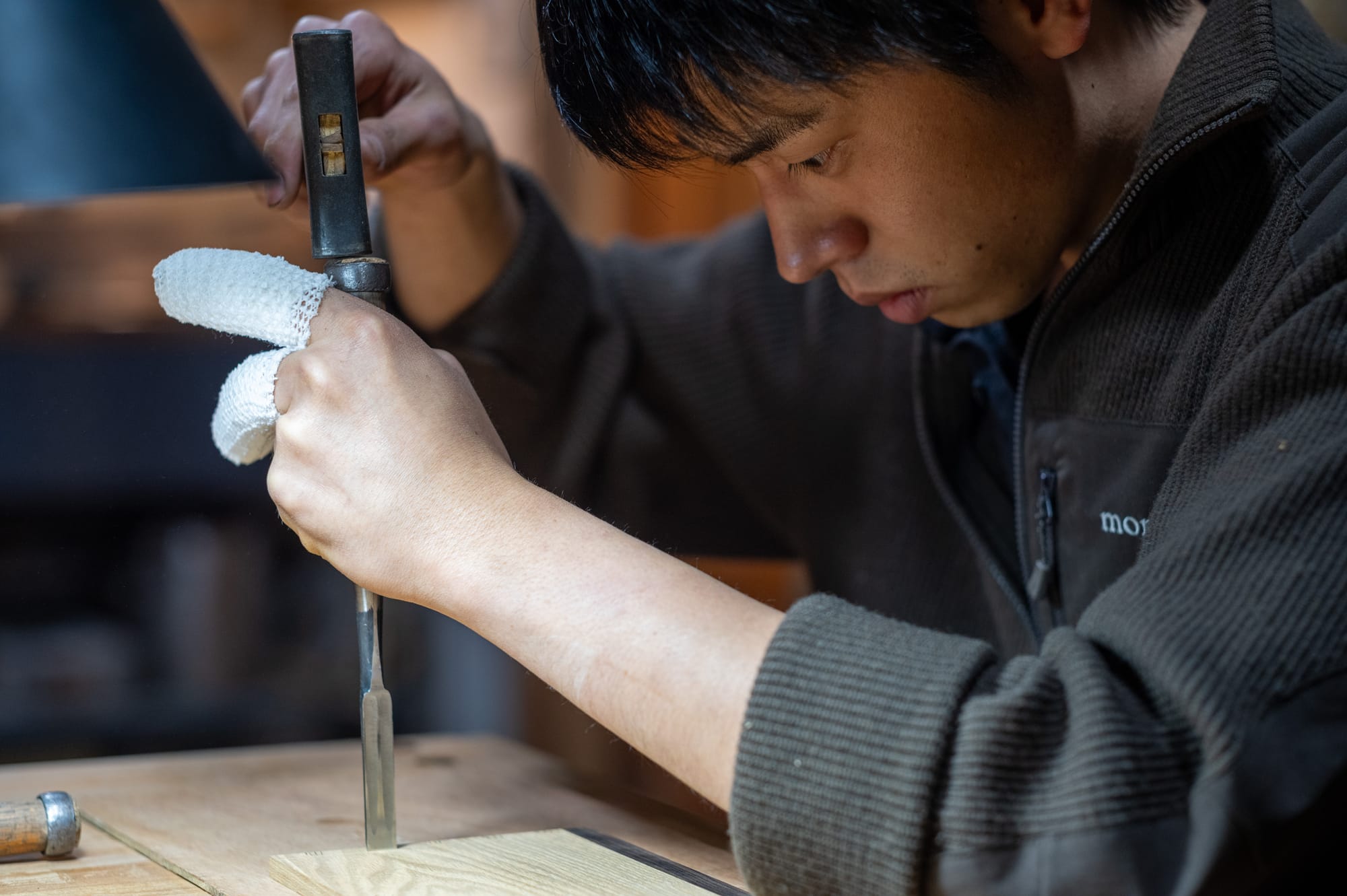
I still remember watching Togo, about a year ago, planing a huge keyaki slab and finishing it in urushi. And 6 months ago, cutting some of his earlier boxes. This trip, I watched Togo prepare to enter a craft exhibition with a small cabinet comprised of nested boxes and drawers.
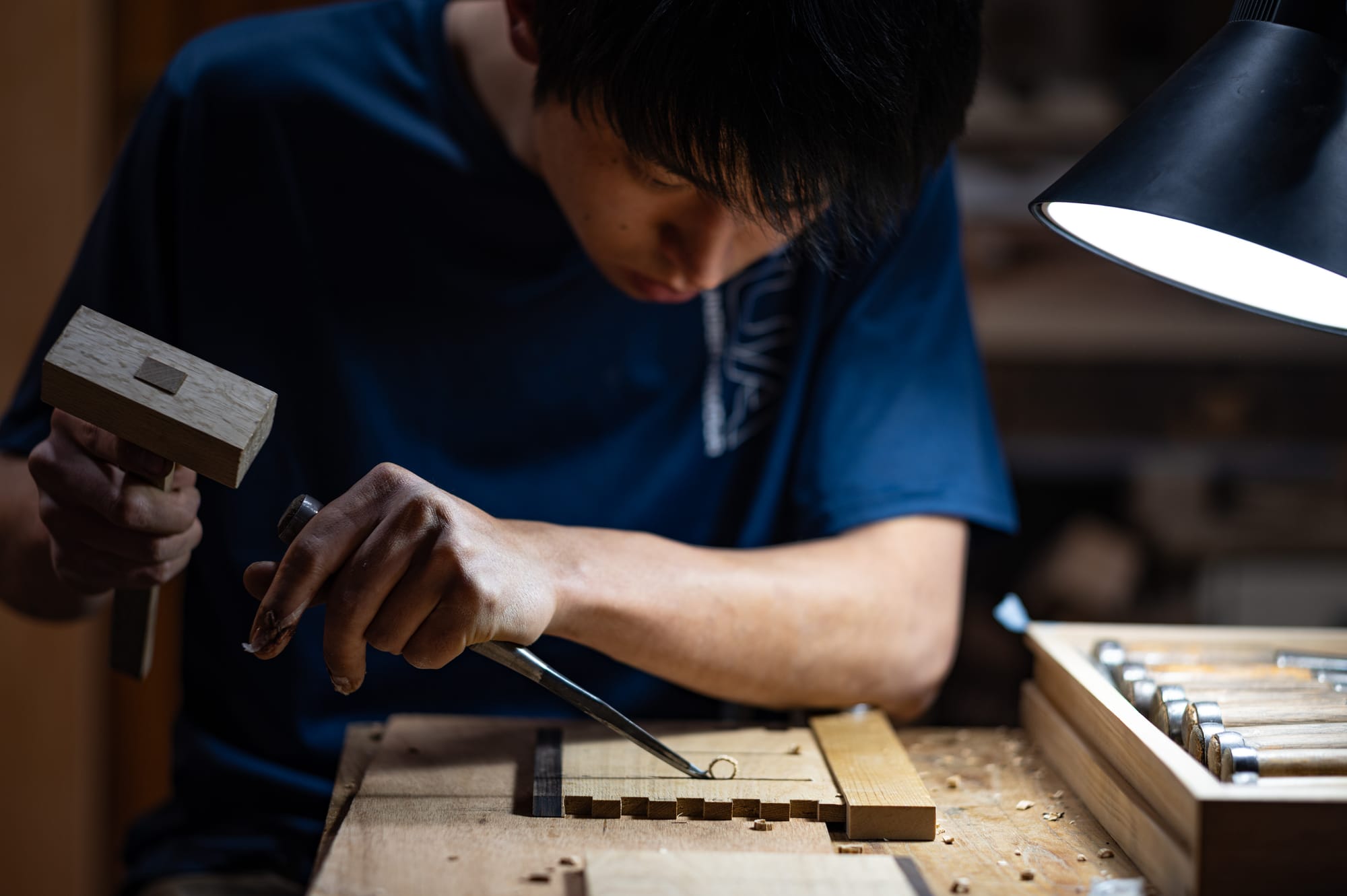
His dovetails were so crisp, so I asked him for advice on how I could cut joints as well as he did. He mentioned, on top of sharpness, a method of chiseling that seemed to make a difference:


